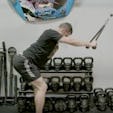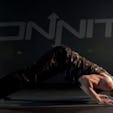WARNING: What you are about to read is straight talk with no B.S.! Can you handle it?
“…all sports require movement. The only thing in your body that creates movement is muscle. Muscles attach to bones, and that’s what creates movement. You either have strong, powerful muscles that can create quick and powerful movements or weak muscles that can’t create
powerful, fast movements.”– Coach J.D.
Specificity is key when training athletes, and many times this is overlooked by different training programs. It has been my experience that in the strength training community General Physical Preparedness (GPP) is the foundation for all levels. In the Strength & Conditioning field, there are different, basic movements and tests that we measure “sports athleticism” rather than “fitness athleticism.”
“Remember, strength training is nothing more than GPP for the athlete.”
– Coach X
If you’re looking to build a general strength base for an athlete that does not have one, there’s an underlying program they must begin before taking on actual resistance training.
In my facility, we make sure every athlete has the knowledge and ability to demonstrate bodyweight movements before any resistance training. If an athlete of any age cannot perform a proper Push-Up, Pull Up, Squat, Lunge or Hanging Leg Raise, then this will establish their starting point.
I visit high school weight rooms on a regular basis where the typical 45lb bar is often the first thing an athlete learns to use. This is not acceptable! A 13-14-year-old with zero experience in resistance training should be taught to move without resistance first.
External resistance can then be introduced slowly as they demonstrate proper technique (like a dowel, PVC pipe, Olympic bar, etc.).
GPP is not an exact science (yet), but it is the motor patterns that will establish the baseline for all complex movements to come.
Sport Specific Strength & Conditioning
After an athlete has a solid base of GPP ( Strength, Speed, Agility, Balance, Flexibility, and Power), we can then focus on their Sport-Specific Physical Preparedness (SPP). Note that nothing we do in the weight room is sport specific, it is merely training the body to move correctly on the field of play. This will enable the athlete to accelerate, cut, and decelerate with control.
This is a very critical section to focus on as an S&C coach because it helps us treat pre-existing injuries, muscle imbalances, and further address technique flaws. Again, this carries over into very specific exercises that will help bulletproof each individual.
“At some point in time, rest becomes a training means.”
– Coach X
The final phase of training is Skill Specific Preparedness (SSP), which involves tapering the individual’s program. This will allow the athlete time to adjust to their new found strength, power, and speed.
An athlete that has been getting ready for a skill position in football will taper off on heavy movements and try to maintain all the attributes they have gained throughout the season. A coach must learn to monitor fatigue, overuse, nutrition, and rest to balance the program for each.
“Ask yourself every day, what can we do and what can’t we do, enable them to do what they do!”
– Coach X
When dealing with athletes, they have unique training needs regarding their skill set. Pitchers (throwers) need extra attention given to their dominant hand, wrist, elbow, and shoulders.
Linebackers are hybrid athletes that can be used as a pass rusher and as an extra safety/defensive back if there is a pass play. These are two examples of athletes that require different training programs in the weight room.
Elite level athletes would not benefit from lack of programming because they require specific training. It would be difficult for N.Y. Yankee pitcher, C.C. Sabathia, to throw a baseball proficiently without specific training.
New England Patriots QB, Tom Brady, would not be a better football player from performing Olympic lifts with a high number of reps. World’s Strongest Man competitor, Derek Poundstone, running a 5k… I think not!
Not all training is transferable
Now let’s explore the Top 5 Strength and Conditioning Methods for Athletic Training.
S&C Athletic Training Method #1: Compound Movements with Accommodating Resistance
We’ve learned over time that we must train the body and musculature at explosive speeds. With this type of training came accommodating resistance through the use of Bands and Chains. These tools allow us to control deceleration and acceleration while moving loads. If used correctly, they can increase your strength in a very short amount of time.
S&C Athletic Training Method #2: Plyometrics
The philosophy of jump training has brought about new ways to increase the fast twitch muscle in the lower body. When done correctly (which means low volume), low reps, and proper rest between sets, jump training can and will make you a more explosive athlete.
S&C Athletic Training Method #3: Medicine Balls
The greatest training feature of a med ball is that when used in a large open area, they allow an athlete to release the ball with incredible amounts of power with no repercussion. They can be thrown sideways, overhead or behind without slowing down. This will allow the athlete to accelerate the ball with no deceleration time.
S&C Athletic Training Method #4: Push/Pull/Carry
Many athletes need to gain weight and strength during the off-season, and the best way to do this is to pick up heavy objects and walk, push, pull, or carry them. It shocks the Central Nervous System into growing muscle quickly. Wrestlers, football, rugby and a few other sports use this type of training to grow bigger, faster, and stronger players.
S&C Athletic Training Method #5: Sprinting
For most athletes, rest and recuperation are a necessary means for them to be ready to repeat their efforts on the field. Let’s take football as an example. The average play is 3-8 seconds long with a 35-45 second break.
For an athlete to prepare for game time, they need to practice with the same period involved in a game time situation. Short bouts of explosive sprinting with adequate rest will help most athletes. Hills and tracks are optimal for this.
As a Strength & Performance Coach, I try to build my athletes up with a positive frame of mind. No matter what age or level the athlete is at, my job is to make them better at what they do. Specificity is necessary for all sports athletes!
“To me, every training program in the country is incomplete. There’ s no one perfect training program. Are we all on the search for the holy grail? Absolutely! At least you should be. That’ s why we read…and the more books you read, the more books you realize you gotta read.”
– Coach X
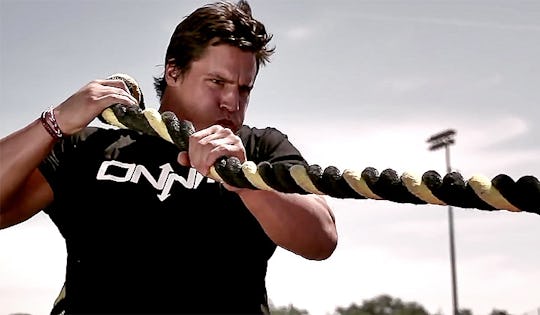
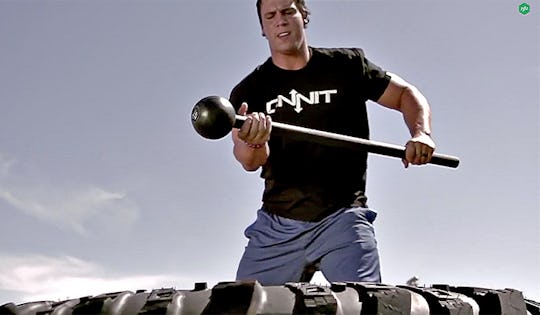
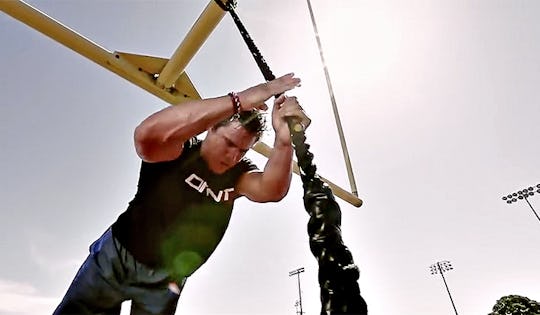
)

